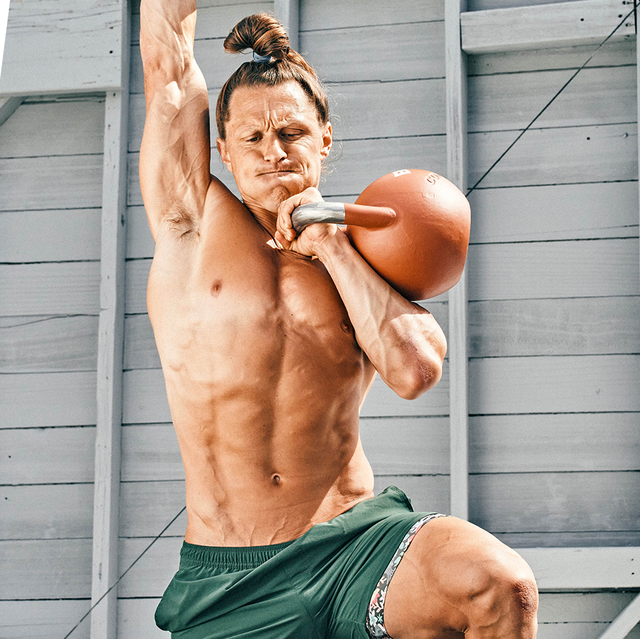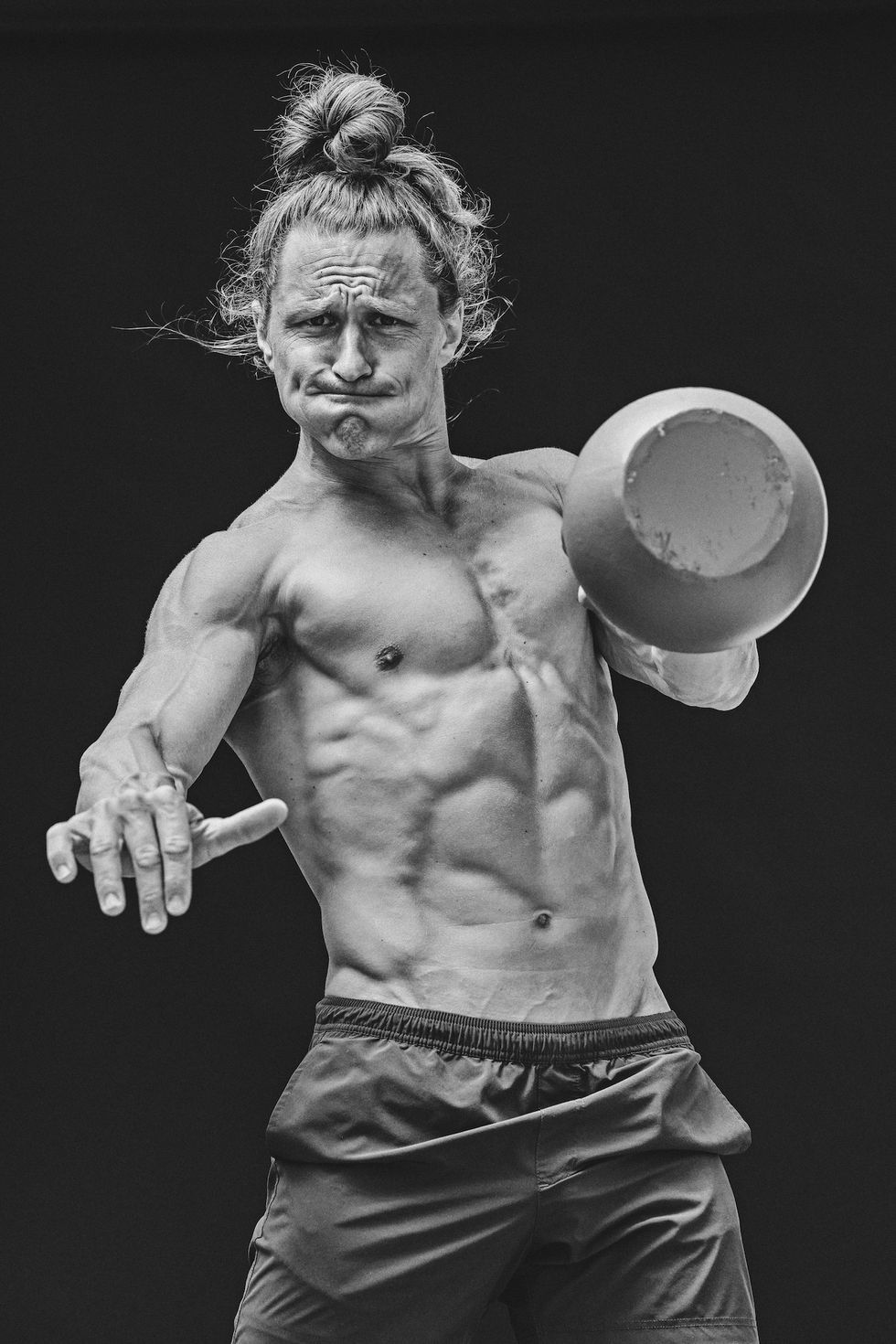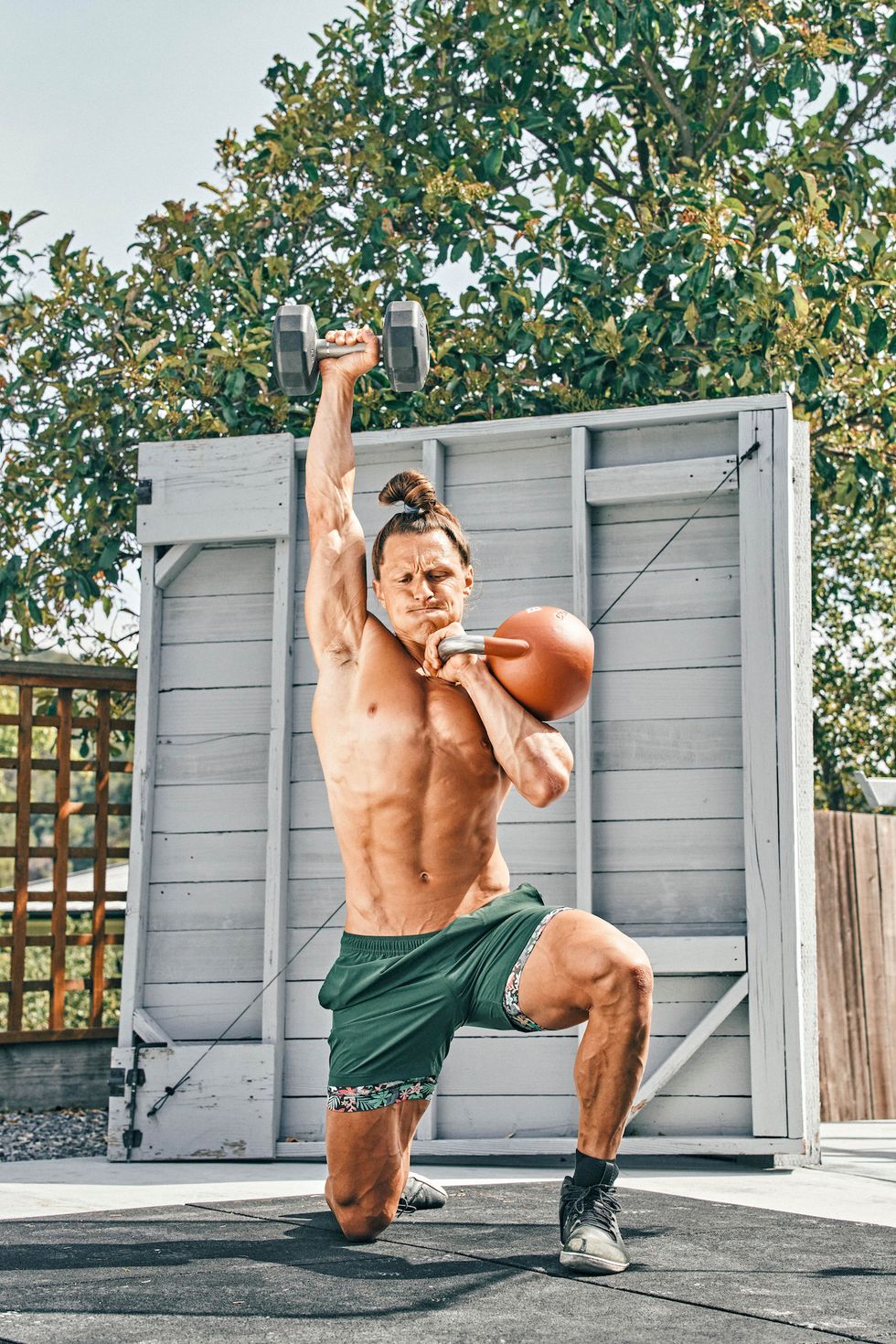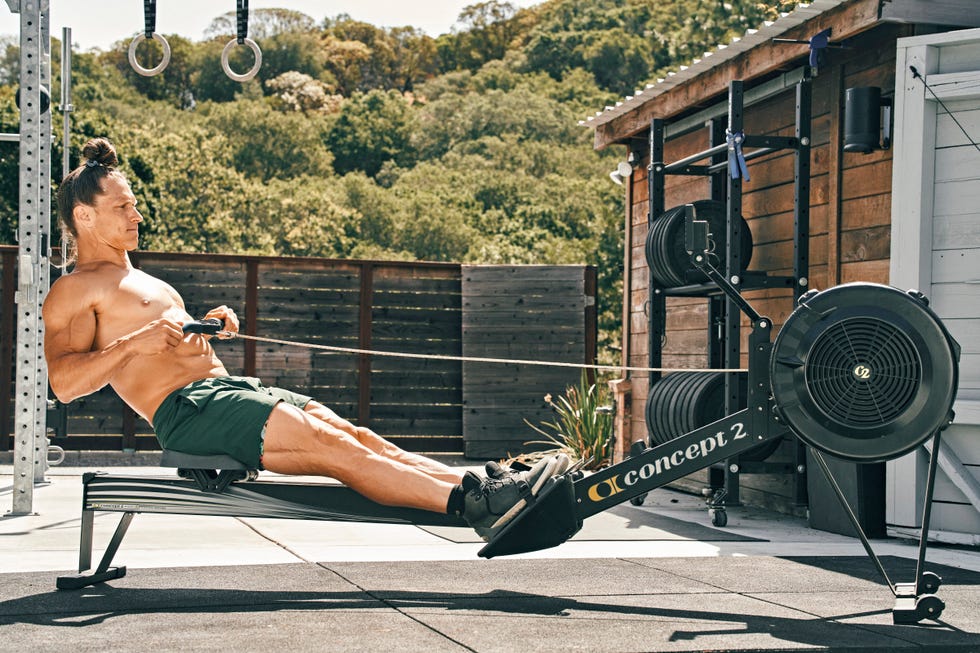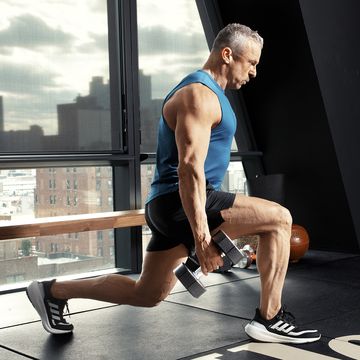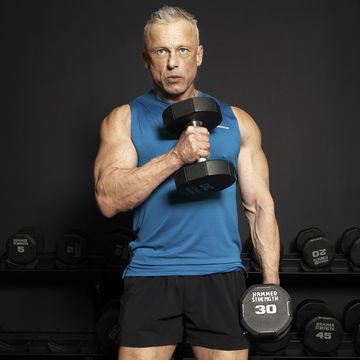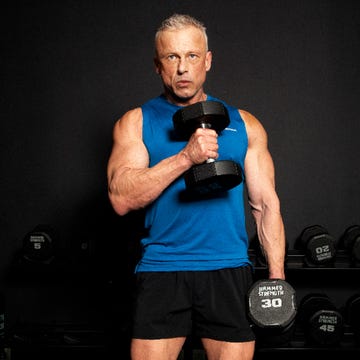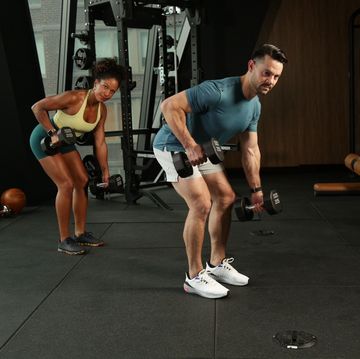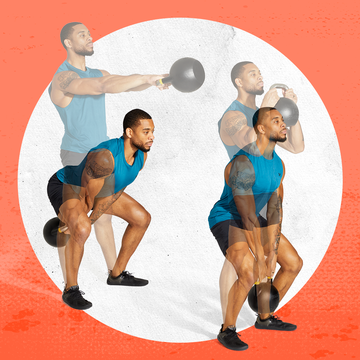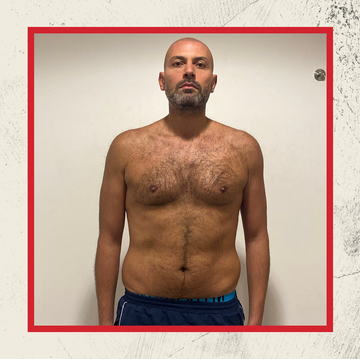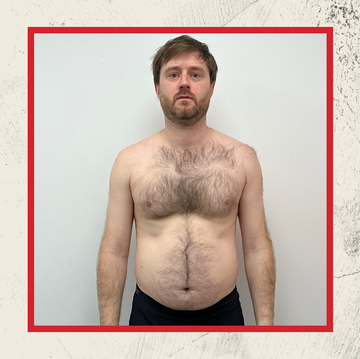MARCUS FILLY DOESN'T want you pounding out rounds of EMOM thrusters until your shoulders can barely move, and he doesn’t want you going so hard during Murph that you’re a quivering mess when you finally finish. Yes, the former CrossFit Games contender knows pile-driving past fatigue is a CrossFit staple, and he understands why you think the secret to building muscle and strength is always to just work harder. But the veteran coach has other ideas.
Sure, you have to push your limits in your training. But CrossFit—and, more broadly, the fitness dogma of no pain, no gain—has long pushed you well past exhaustion, often leaving you to peel yourself off the ground after every work- out. And Filly has seen what that leads to: It may blast calories and help you build muscle in the short term, but it can lead to diminishing results over the long haul. It usually causes burnout. From running to bodybuilding, too much of the fitness industry pushes you to chase fatigue above all else. “Blow through all your mental, emotional, and physical resources in your workouts and you’re not going to have the same capacity for your job, wife, husband, or other interests,” says Filly, a California-based coach. You’re seeking better health, but you’re actually robbing yourself of it, he says.
The solution is what Filly calls Functional Bodybuilding, and it’s a kinder, gentler version of classic HIIT that still helps you build muscle—but doesn’t leave you feeling (and fearing) every moment of every workout. It’s an approach that’s gaining attention: Filly has nearly 860,000 Instagram followers, and his Persist workout program has about 10,000 subscribers. He even has an exercise, the Filly press, named after him. (You’re going to learn it, too.) The protocol itself is born of Filly’s own experience. Six years ago, he was one of CrossFit’s strongest, in part because of a regimen of three-a-day workouts. Yes, three a day! Each session was exactly what you’d expect: Filly took on WOD after WOD, lifting heavy and scoring many reps as he carved six-pack abs and forged elite strength, building to a 550-pound deadlift.
The approach earned results, propelling Filly to a 12th-place finish at the 2016 CrossFit Games. The downside: His mind and body were wrecked. Days after the Games, he struggled to find a reason to go to the gym. Even worse, all those reps of power cleans, pullups, and burpees left him battling constant soreness in his shoulders, hips, and “places I’d never dealt with in the past.” “I was toast,” he says. “I went from feeling like the fittest to the least fit person in the room.”
Filly wound up quitting the gym entirely for two full months (an eternity for today’s no-days-off runner or strength-training fiend), but his mind was never far from fitness. Done with CrossFit, Filly, who’d majored in molecular and cell biology at UC Berkeley and started med school before turning to the program, rethought his entire training plan, searching for ways to build strength without wearing down his body with heavy weights and huge reps.
When he returned to the gym, he’d built his own workout style, one that maintains a strong focus on form during EMOM and AMRAP challenges, increases recovery time, and lets you work with lighter weights. And the three key tenets of his style can be applied to any workout you do—CrossFit or not.
Marcus Filly's Rules for Functional Bodybuilding Success
Rule 1: Technique Over Tonnage (and Tons of Reps)
Filly knows all about the classic CrossFit pullup stereotype, the athlete’s entire body flailing in midair as they rip through reps. He understands it, too. “In competition," he says, "you're trying to do the minimum that you can get away with. That means performing each rep in a way that just barely clears the bar for the acceptable standard."
There's a good chance you've done this in your own workouts, too, rushing through extra reps of biceps curls or pushups. Those rushed reps with shaky form invite injury.
Filly's programs use two tricks to break that habit. The first: strict tempo. During the lowering portion of any exercise, count to 3 seconds. Pause for 1 second at the bottom of the exercise. Then aim to lift quickly. This tempo keeps each exercise focused on the muscles you're training, sparing your joints pain and injury.
The second: focus on form. One way to do this is by integrating one and a quarter reps, which can be used during most strength-based exercises. Filly does it often in the cyclist squat. You’ll set up in goblet-squat position, your heels on a weight plate, then bend at the knees and hips, lowering slowly into a squat (for 3 seconds). Instead of standing back up, you’ll go one fourth of the way up, lower back down, then stand up. Try it for 3 sets of 8 to 10 reps.
Rule 2: Get Off-Balance
When you follow Filly’s first rule, you’ll inevitably have to use lighter weights than usual. That doesn’t mean you won’t challenge every muscle. He ensures that your entire body gets a workout by using offset-load moves, which have you lifting weight with one arm or leg at a time.
And no, that’s not as easy as it sounds, because offset-load moves require your abs and glutes to kick into overdrive to stabilize your body. Don’t believe him? Think back to your last time lifting a heavy suitcase into the overhead bin before a flight. Harder than a lateral raise, right? Filly knows why. “That’s a one-arm lift with a twist and a slight lunge,” he says. “All one-sided moves.”
Offset-load moves can challenge your whole body even more if you hold weights in both hands while performing reps on only one side. That’s the idea behind the Filly press, a shoulder-press variation named for the coach. To do it, stand holding a kettlebell in your left hand at your shoulder. Hold a dumbbell at your shoulder in your right hand. Keeping the kettlebell close to your chest, press the dumbbell overhead, then lower. Do 3 sets of 8 to 10 reps per side. And expect it to be harder than you think: The midback muscles on your left side work overtime to keep the kettlebell stable.
Rule 3: Be an All-Around Star
Yes, Filly wants you to do cardio. He keeps it fun, though, by relying on intervals three times a week.
Yes, it’s tempting to fixate on packing on muscle or getting an exercise (think deadlift or bench press) superstrong or dominating every morning run. After all, most athletes focus on specific traits (endurance, speed, strength). Filly knows it, too. “That was true of me in my competitive days,” he says. “The marketing message we hear is that if you reach an elite level of fitness, you’ll naturally look and feel healthier. But that’s completely inaccurate.”
Truth is, overfocusing on a few gym ideas can be antithetical to your health. You may want to build a massive chest, but if you never hone your flexibility or cardio, you’ll struggle to haul a bag of groceries several blocks home or to reach the top shelf at the grocery store pain-free.
Filly’s fix is a hybrid workout three days a week: Spend 10 minutes stretching, 10 minutes building strength with exercises like dumbbell rows, 10 minutes on muscle exercises like the Filly press—and 10 to 20 minutes of (yes) cardio. That cardio shouldn’t be a mindless run or walk. Filly suggests this circuit, which can be done on a rower, ski erg, or bike (or by running):
Go 500 meters, then rest 45 seconds. Go 350 meters, then rest 45 seconds. Go 200 meters, then rest 45 seconds. Repeat for 3 rounds.
Expect to finish in about 15 minutes— but don’t expect to feel crushed. Marcus Filly doesn’t want to kill you, remember. He wants you leaving this workout feeling your best.
This story originally appears in the September 2022 issue of Men's Health.
